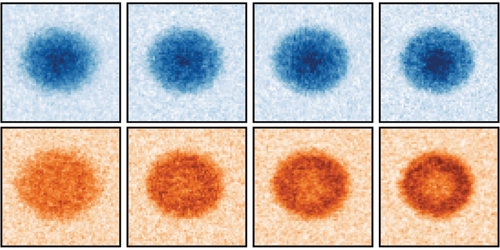A General Equation of State for a Quantum Simulator
When a certain quantum system proves difficult to investigate, one option is to study a different one that is physically equivalent but more accessible. For example, to understand how electrons behave in a strongly correlated electron system—an experimentally and theoretically nontrivial problem—researchers can instead study a lattice of cold atoms—a controllable system that obeys the same statistical rules as its more complex counterpart (see Feature: Coming Soon: Cold Atoms Impersonate Superconductors). Now Giulio Pasqualetti at the Ludwig Maximilian University of Munich and collaborators have comprehensively characterized the equation of state for a general version of a model used to translate the behavior of cold atoms on a lattice into that of correlated electrons [1]. Their results confirm the reliability of cutting-edge numerical treatments of this model, making it even more attractive for studying novel condensed-matter phenomena.
The model in question is the Fermi-Hubbard model, which accounts for interactions between fermionic atoms in a lattice. Atoms prepared with two possible states are used to explore problems that involve the two spin directions of an electron, such as electron transport, while atoms with more states are used to explore more complex phenomena, such as new types of magnetism. The equation of state for the two-state Fermi-Hubbard model has previously been characterized numerically and experimentally. But multistate models, which are harder to handle numerically, remain far less well understood.
Pasqualetti and colleagues used ytterbium-173 atoms, which can adopt six possible states. They measured the thermodynamic properties of the multistate Fermi-Hubbard model using a lattice of these atoms and compared the results to predictions using newly available numerical calculations. The measurements also accessed regimes that are currently numerically intractable and provided the data to derive a general equation of state for the Fermi-Hubbard model.
–Marric Stephens
Marric Stephens is a Corresponding Editor for Physics Magazine based in Bristol, UK.
References
- G. Pasqualetti et al., “Equation of state and thermometry of the 2D SU(N) Fermi-Hubbard Model,” Phys. Rev. Lett. 132, 083401 (2024).




